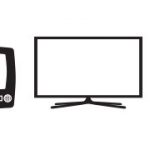Technology Helping to Detect and Treat STDs
Young people across the nation are exposed to many potential health threats: obesity, chronic illness, and an increase in homicide and suicide — just to name a few. But, did you know that sexually transmitted infections and diseases are on the rise among teens and young adults?
Experts estimate that half of all sexually active people will contract an STD before their 25th birthday. The Centers for Disease Control and Prevention (CDC) reports that there are almost 20 million new STDs diagnosed each year and half of those are in people between the ages of 15 and 24.
If you have a young adult in your life or you are one, you might be wondering what’s behind these increasing numbers and what can be done to improve education and testing. The good news is that technology is changing healthcare around the world with eHealth and other advancements.
Image Source: Unsplash
Understanding the Data
In 2015, the number of new chlamydia, gonorrhea, and syphilis infections reached a record high. Chlamydia set the record for the highest number of annual cases of any condition with 1.5 million new infections diagnosed. Rates of syphilis infections in men and women increased in every part of the country, and gonorrhea diagnoses reached a new high at 395,216 cases.
As striking as these numbers might be, it’s important to note that many other cases go undiagnosed or untreated and can lead to complications such as infertility, stillbirth in infants, and an increased risk of HIV. Pinpointing the exact cause of the increase in infections is difficult. It might be related to the ease of meeting people through dating apps and other forms of social media. However, regardless of the reason for the rise, it’s critical that methods for diagnosing and treating STDs are discovered.
Need for a Change
It’s essential we determine why certain populations are at a higher risk for HIV/AIDS and other infections. The disparities among those at risk include lack of access to affordable and reliable care, limited education, and biases related to race, gender, or sexual orientation. While teens and young adults make up a significant portion of new infections, they aren’t the only group at an increased risk.
One population identified as a group at a higher-than-average risk for HIV/AIDs includes gay and bisexual men and other men who have sex with men. Often the biases they feel from society at large and sometimes from the healthcare community can leave them going untreated until the infection creates other complications they can’t ignore. African-American men are the second-most vulnerable group in the US for HIV/AIDS.
Regardless of how you might feel about those with STDs, there is a dire need for answers to the problem.
Looking to Technology for Answers
While it’s been a bit slower on the uptake in medicine compared to other industries, technology is now making healthcare more efficient. Here’s a look at some of the solutions technology brings to the future of sexual health.
Tech-Giants Get Involved
Even Google entered the business of monitoring STD rates when they allowed access to their search term data to a few academic institutions. These research facilities analyzed specific words searched and pinpointed them to geographical locations to predict an upcoming outbreak.
For example, an uptick in the search for “painful urination” might indicate that a new wave of an STD is about to hit. This information would then be sent to the local health authorities so that education, testing, and treatment can meet the impending need.
Apps Increase the Ease of Testing
Google isn’t the only tech company to join in the fight against STDs. Mately is an app that’s breaking the mold by offering simple, affordable STD testing without going to a local clinic or provider’s office.
To use this service, you send a few drops of blood to the Matley lab using a device they provide. When your results are ready, you can log in to your secure account to view your results online. This tech company even offers the option of adding a badge to your dating site profiles to let others know of your recent testing. Standard testing checks for HIV, but other add-on conditions such as syphilis, hepatitis, and herpes can be checked as well.
Telehealth Improves Access
If the thought of baring your bum or other private parts to a doctor face-to-face is more than you can handle, STD Triage is delivering a solution. It’s a quick and easy service where you upload an anonymous image of your worrisome skin condition and any accompanying symptoms. Within 24 hours you’ll receive an answer from a board certified dermatologist who can treat or recommend the type of provider you might need to see. This app brings ease of access like never before.
The Importance of Anonymity
No one likes to discuss STDs, and having to reach out to a past partner to let them know you just tested positive can be challenging and embarrassing. To help mitigate this, some STD testing sites will send an anonymous text message or email to past partners letting them know that they need to get tested right away. This platform is a tech-solution to a challenging, but critical conversation.
Looking to the Future
Technology companies are just beginning to solve STD testing and treatment challenges. With time, money, and continued success in this space, others will join the fight to help the young people of today become healthy adults of tomorrow.

















